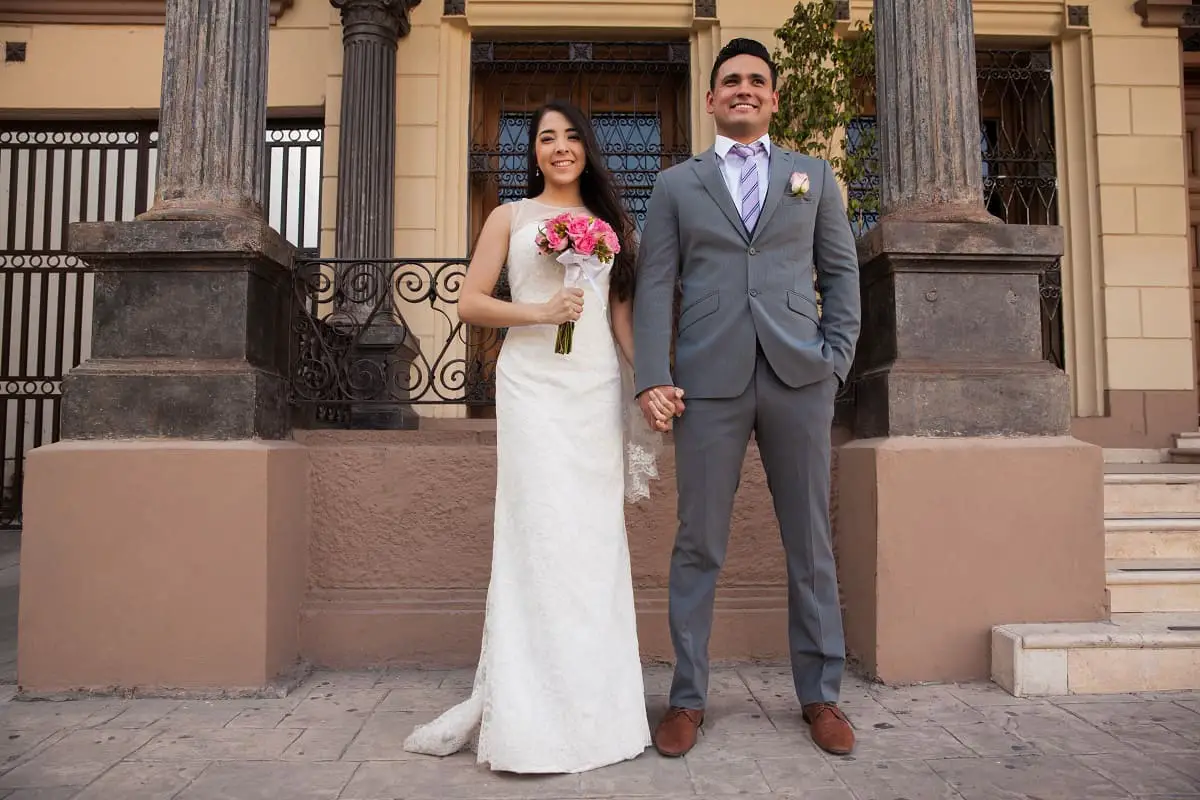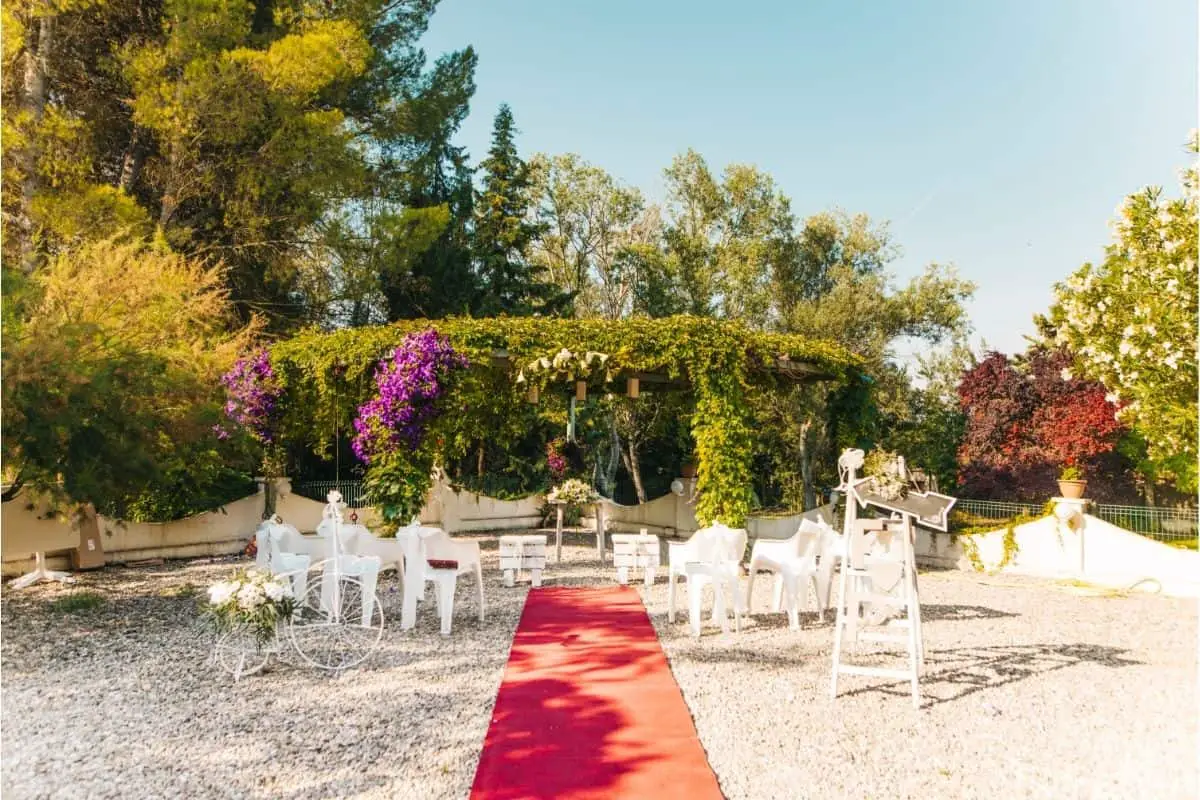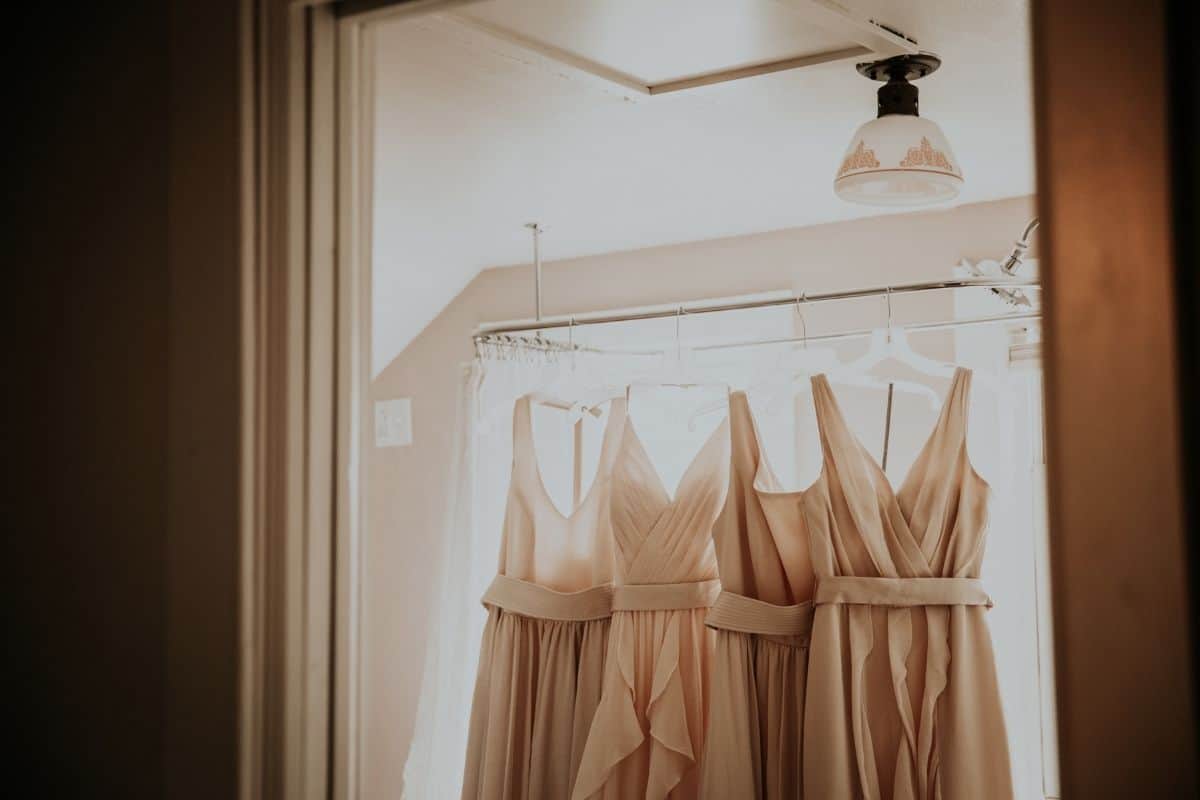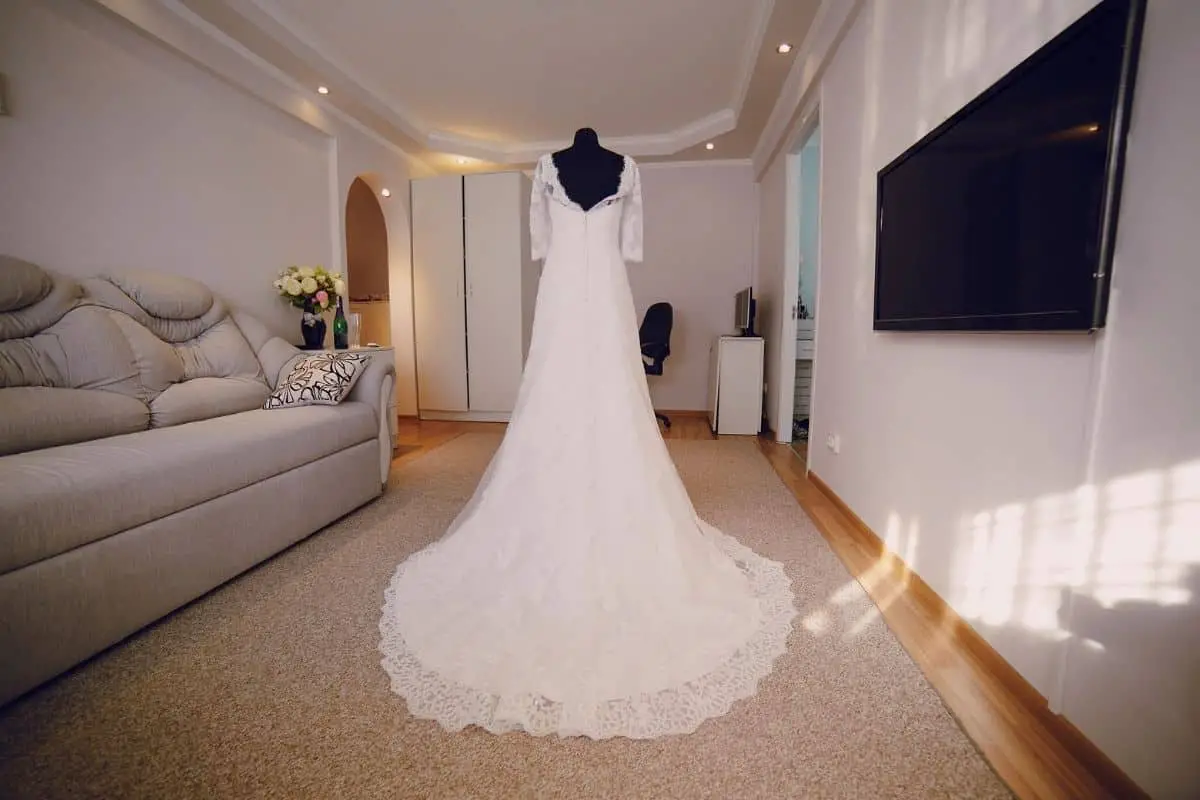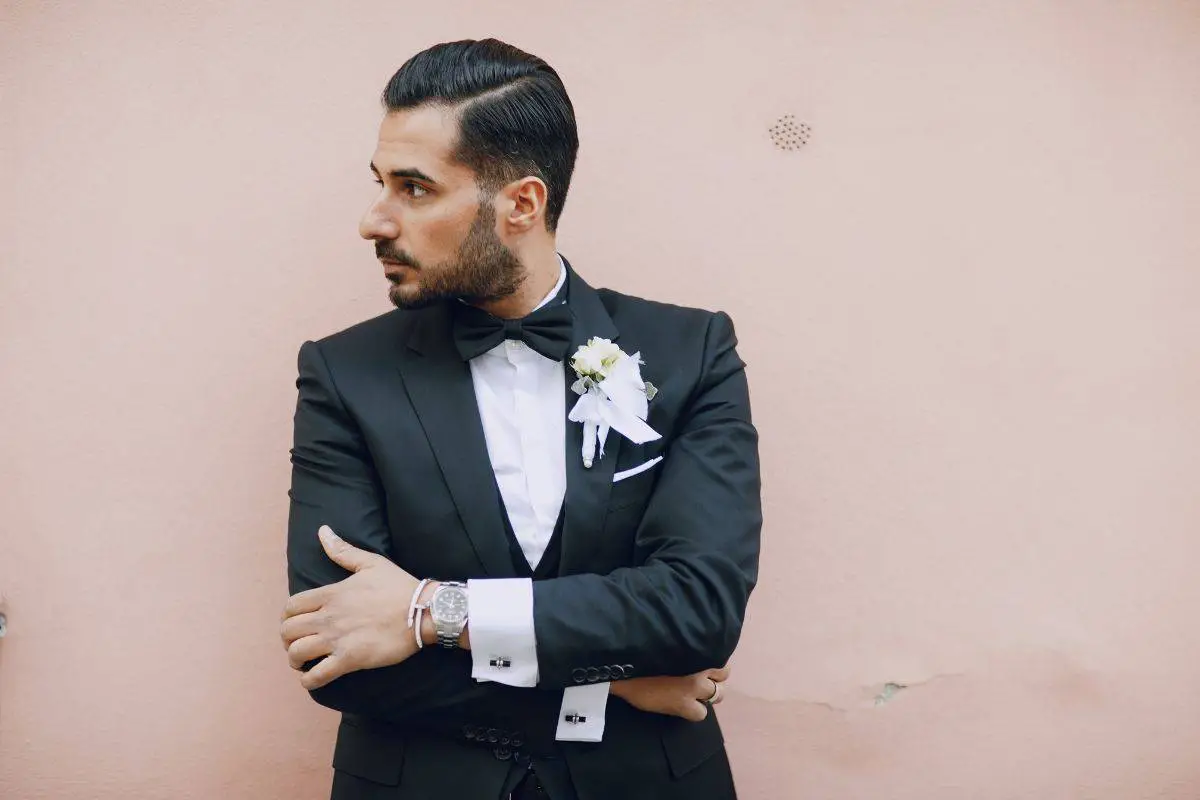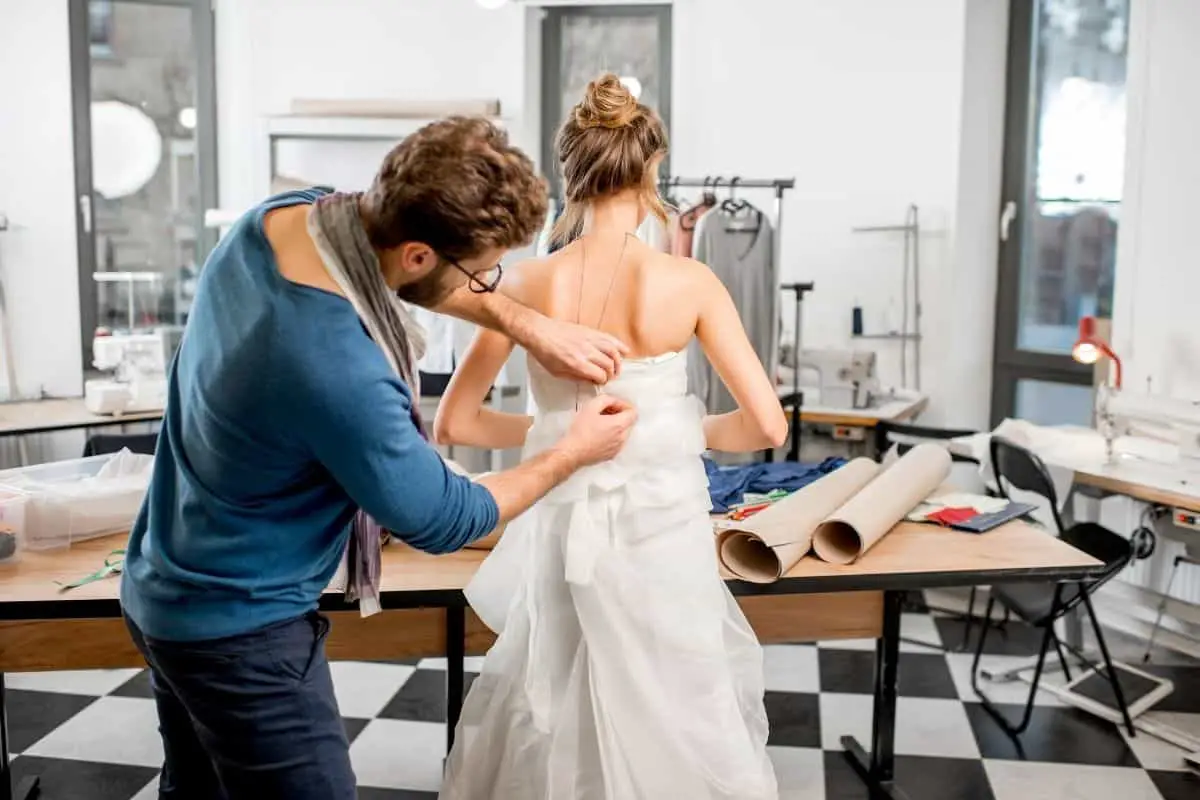You’ve finally found the perfect dress at the store, but it turns out it’s too tight or too big. What should you do next?
If you want to look great on your special day, you’ll need to get the right fit. But finding the right size can be tricky.
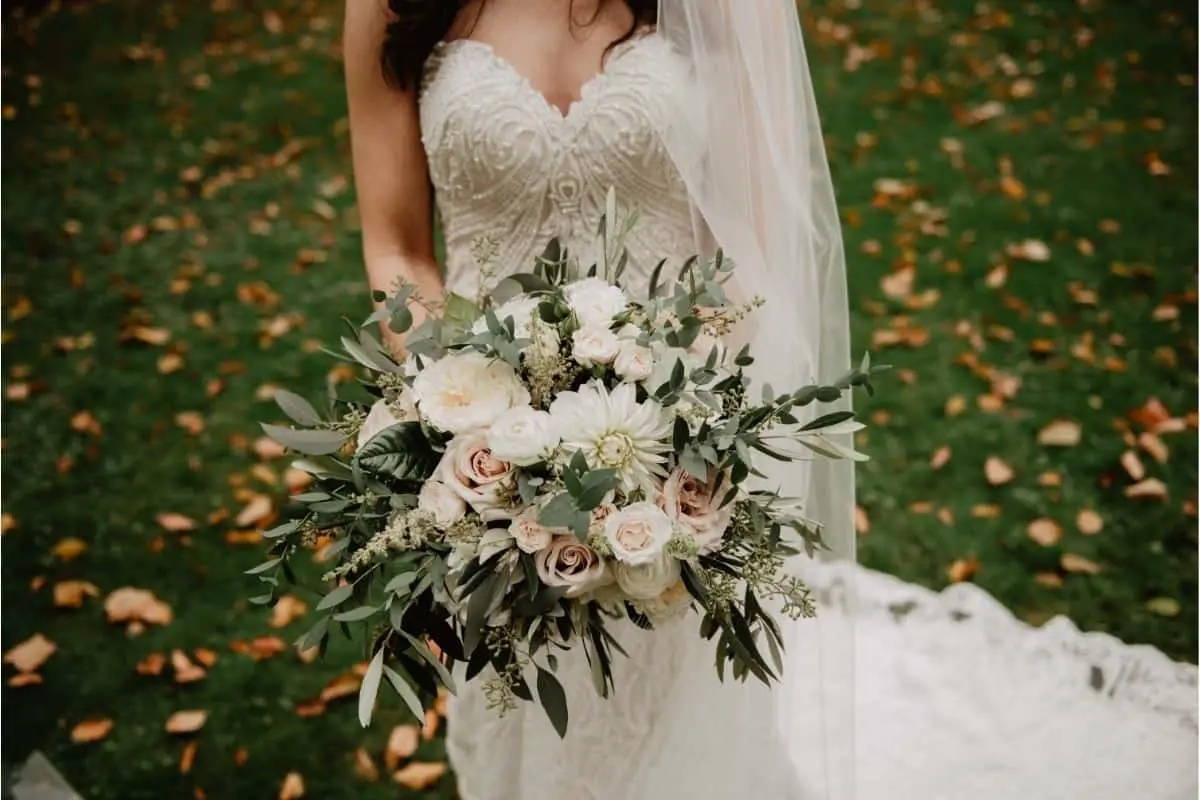
There are several ways to determine whether a dress fits properly. The first step is to measure the bust, waist and hip areas. Then compare these measurements to the size chart provided by the manufacturer.
Once you’ve determined the proper size, you’ll need to decide where to take the dress. Some stores offer alterations services, while others only sell dresses that come pre-sized.
Regardless of where you choose to go, it’s important to remember that altering a dress takes time and skill.
Be sure to ask questions before proceeding. If you’re not comfortable with the process, don’t feel pressured into making any changes.
How Do I Alter My Wedding Dress?
If you want to alter your wedding dress, here are some tips for getting started:
Measure yourself. Take your measurements using the same measuring tape used to determine the correct size in the first place.
Compare your measurements to the size chart. Make sure you match up the numbers on the size chart to those on your body.
For example, if the size chart says “bust 32”, make sure your actual measurement falls between 31″ and 33″.
Determine what kind of alteration will work best for you. Some dresses have built-in alterations, which means they were designed to be altered easily.
Others require more extensive modifications. Ask your seamstress about the type of alterations needed.
Choose an experienced tailor or seamstress. A professional tailor has experience working with bridal gowns. They may also know how to use specialized tools like a bodice stretcher.
Make sure the alterations are included in the price. Some shops charge extra for alterations, so check ahead of time.
What Should I Wear With My Wedding Dress?
You’ve been dreaming about this moment since you first saw your wedding dress. Now that it’s almost here, you might be wondering what to wear with it. Here are a few ideas:
Wear A Veil
This classic accessory adds elegance to your look and makes your hair appear longer. It also keeps stray hairs from falling in your face.
Add Jewelry
Whether it’s a necklace, earrings or bracelet, adding accessories helps define your style.
Choose A Hairstyle
Wearing your hair down gives you a casual vibe, while wearing it up creates a formal appearance.
Don’t Forget Shoes
Your choice of footwear can help complete your ensemble. Try sandals, pumps, or flats.
Your wedding dress is one of the most important pieces of clothing you’ll ever own. Getting the perfect fit is essential to looking your best on your big day.
Don’t worry; you’ll find plenty of advice online and at local retailers. Just keep in mind that no two women are exactly alike. So, when in doubt, ask someone else for their opinion.
How To Look After Wedding Dresses
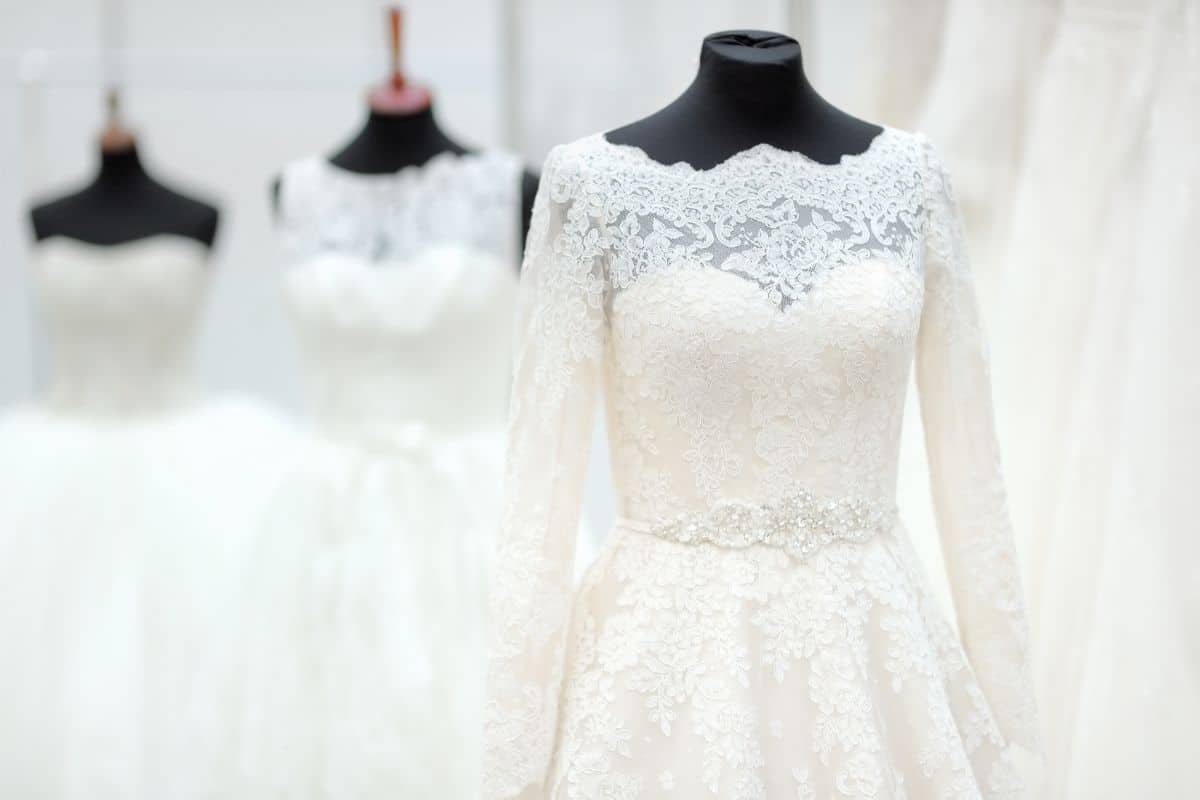
When you buy a new dress, you expect it to last forever. Unfortunately, many brides discover that their wedding gown needs repairs after just a few years.
Fortunately, there are ways to extend the life of your dress without sacrificing its quality.
Keep Your Dress Clean
Dirt, stains and other contaminants can cause your dress to lose its shape over time. To prevent this problem, wash your dress regularly.
Use mild soap and water, and hang it to dry. Avoid harsh chemicals and detergents that could damage your fabric.
Keep Your Dress Pressed
When you put your dress away each night, don’t let it sit in wrinkles overnight. Instead, gently press it flat with a pressing board.
Use Protective Undergarments
If you’re prone to spills, try using a bra cup protector. These pads are made specifically to protect delicate fabrics. They won’t add bulk to your bust line, either.
Use A Hanger
Hanging your dress properly allows air to circulate around it. This prevents moisture from building up inside the garment.
Avoid Heat Exposure
Heat causes fabric to stretch out and lose elasticity. For the same reason, avoid ironing your dress.
If you notice any signs of damage, have it repaired immediately. Otherwise, the problem will only get worse.
Tips For Buying A New Wedding Dress
Buying a new wedding dress can seem overwhelming. But if you follow these tips, you should have little trouble finding the right size and style.
Know Your Measurements
Before you shop, take your measurements. You may need to go shopping more than once before you find a dress that fits perfectly.
Consider Your Budget
Once you know how much money you want to spend, narrow your search by price range.
Consider Your Lifestyle
Do you prefer dresses that are fitted or loose-fitting? Are you comfortable with strapless or halter necklines?
Look For Reviews
Ask friends and family members who have purchased similar dresses what they liked about them.
Shop At Specialty Stores
Bridal boutiques often carry a wider selection of styles and sizes than department stores.
Ask For Assistance
Most department stores offer free alterations. And some bridal shops even provide free fittings.
Ask For Help
Many people enjoy helping others look their best. If you see an employee wearing a bridal (see also: What Should I Wear To A Bridal Expo?)store’s logo, ask him or her for advice.
What Is The Right Wedding Dress Size?
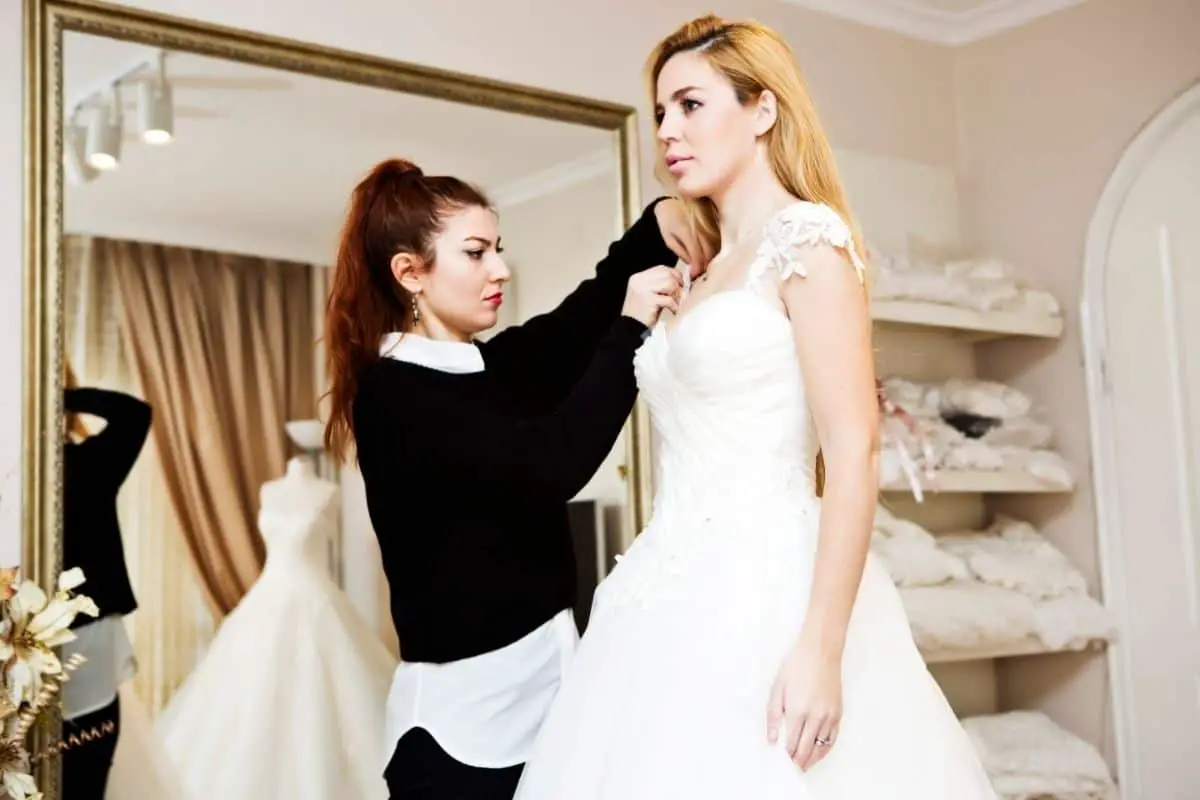
The first step in selecting the right size for your dress is determining whether you’ll wear a corseted or non-corseted dress.
A corseted dress has built-in support, so it doesn’t require as much room in the back. However, a non-corseted wedding dress requires less space in the back.
The next thing to consider is your height. Your dress should fit comfortably on top of your hips. It shouldn’t ride too high on your waist, but it also shouldn’t fall below your knees.
You should also be aware of your body type. If you’re pear shaped, you might want to choose a dress with a higher waistline. On the other hand, if you’re apple shaped, you might prefer a lower waistline.
How Much Should I Spend On My Wedding Dress?
You’ll likely pay anywhere from $100 to $1,000 or more for your dream wedding gown. Here are some factors to keep in mind when deciding how much to spend:
Your personal taste. How much do you love the dress? Will you wear it again if your marriage ends? What kind of reception venue will you host? All of these things factor into the final cost of your dress.
Can You Alter The Size Of Your Wedding Dress?
Wedding dresses are pretty rigid, so it is notoriously hard to alter the size of your wedding dress(see also: The Best Plus Size Dresses For Your Beach Wedding). There are a few ways to make minor adjustments to your dress:
Have it altered. This involves taking the dress to a professional seamstress who can adjust the length, add straps, remove seams, and sew darts.
Let it out. By letting out the dress, the seam allowances can be changed. This allows your seamstress to make adjustments based on your comfort.
Get a zip extender. By getting a zip extender or back alteration, your seamstress can create some extra room in the back of your dress.
They may also be able to add a gusset to the seams under your arms to allow more movement and room.
Can All Wedding Dresses Be Altered?
No. Some dresses cannot be altered. These include evening gowns, ball gowns, and cocktail dresses.
In addition, some dresses come with a zipper instead of buttons. These types of dresses usually don’t need any tailoring.
How Much Room Should I Have In My Wedding Dress?
To determine how much room you need in your dress, measure yourself at the natural waist (the point where your torso meets your hips).
Add two inches to this measurement for every four inches above the natural waist. So, if you’re 5’10”, you’d add 2″ + 4″ 6″.
For example, if you’re 5 feet tall, you would order a dress that measures 6 1/2″ + 2″ 8 3/4” from your natural waist.
For most women, the dress should cover the bottom third of your thighs. To figure out which part of your body needs the most coverage, fold a piece of paper in half lengthwise.
Then draw a line down the middle of the folded paper. Measure the distance between the lines. That’s the area of your thigh that needs the most coverage.
You might not need all the available space in your dress. Some women choose to buy a smaller dress because they don’t like having extra material around their midsection.
If you plan to wear a veil, make sure the veil will sit flat against your face without riding up into your eyes. Also, check the length of your train. Make sure it won’t hit the ground when you walk.
If you’re planning to wear a veil, you may want to consider ordering a larger dress. You can always take off a few inches after the ceremony.
Determining How Big Should Your Wedding Dress Should Be
Your dress should fit snugly over your bust line, but it should still allow enough room for movement. For instance, if you’re going to dance, you’ll need more breathing room in your dress.
Your dress should also fit well across your chest. It should hug your shoulders and arms. But it shouldn’t feel tight around your neck.
When shopping for your dress, try on different styles until you find one that fits well. Don’t worry about trying on dresses that are too big.
They’ll just look baggy on you. And remember, you can always get rid of the excess fabric later.
Final Thoughts
The best thing you can do before you start shopping is to have an idea of what kind of wedding you want. If you aren’t sure, ask your friends and family members.
They probably know what type of wedding you’re looking for. This will help you decide on what you’re going to wear.
Once you’ve decided on a style, size, and color, visit several bridal stores. Ask them questions about the fabrics, sizes, prices, etc. This way, you can narrow down your choices.
- Full Breakdown: How Much Does Your Dream Disney Wedding Really Cost? - April 13, 2023
- Magical Beginnings: 11 Steps for Planning Your Dream Disney Wedding - April 8, 2023
- 40 Unique Gifts For Daughter On Her Wedding Day - March 25, 2023

